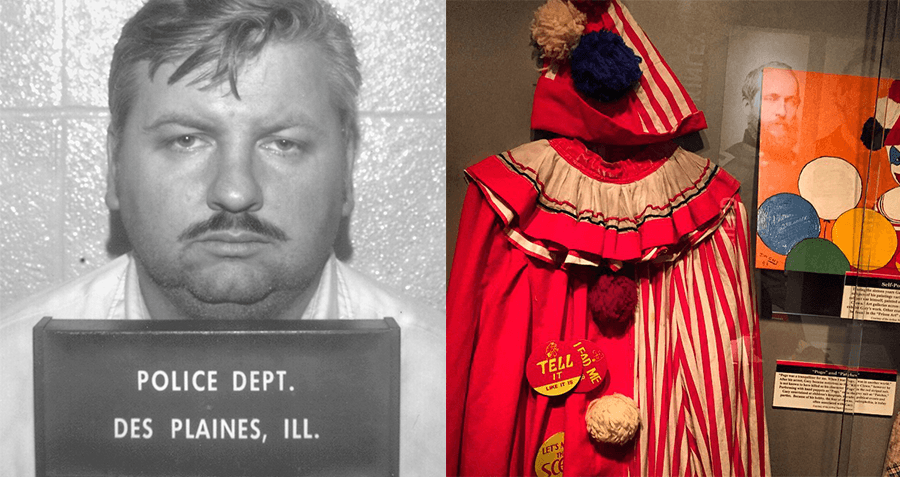John Wayne Gacy, The Infamous “Killer Clown”

Left: Tim Boyle/Getty Images, Right: Steve Terrell/Wikimedia CommonsLeft: John Wayne Gacy’s mug shot. Right: The clown suit Gacy wore as “Pogo the Clown.”
One of the most notorious American serial killers of all time, John Wayne Gacy murdered 33 young men between 1972 and 1977, and he sexually abused countless others.
Chillingly, during his murder spree, he portrayed himself as an upstanding citizen, often dressing up as a jovial character called “Pogo the Clown” at local parties, fundraisers, and children’s hospitals.
Those who knew Gacy before his crimes came to light described him as a friendly and likable man. But there was obviously a lot that they didn’t know.
After he left home for the first time, Gacy took a job as a mortuary assistant. Late one night, after he saw the morticians embalm the dead bodies, he crawled into the coffin of a teenage boy. He lay wrapped around the boy all night, and while the event shocked Gacy into returning home, he never forgot the feeling of lying next to the dead boy.
Gacy led a seemingly normal life following the incident, graduating from business school, getting married, and becoming a father. But that life came crumbling down in 1968 when he was convicted of sexually assaulting several young boys. He was sent to prison and his wife divorced him.
Released on parole 18 months later, Gacy moved to Norwood Park, got married again, and began to perform as “Pogo the Clown,” a jolly character he dreamed up while he was still in prison. His new wife began to question his love of clowns and apparent interest in teenage boys, and eventually, Gacy told her that he was bisexual.
His second wife soon filed for divorce. With Gacy now left alone in their home, he went on to murder more than 30 victims.
Some of his victims were drifters from out of town, and some were local boys who Gacy worked with. When the boys began to go missing without a trace, Gacy sometimes made a point to “help” during the search.
He continued to murder undetected until it was discovered that a missing 15-year-old boy had last been seen with Gacy, prompting police to search his home. What they found no one had expected.
The investigation turned up 29 bodies total, which had been hidden underneath Gacy’s home (he dumped his other four victims into a river). Gacy was promptly arrested, charged with multiple counts of murder, and then sentenced to death. He would spend 14 years in prison before finally being executed by lethal injection in 1994.
Gacy, like other American serial killers before him, left behind some grisly mysteries; five of the bodies in his house were never identified.





